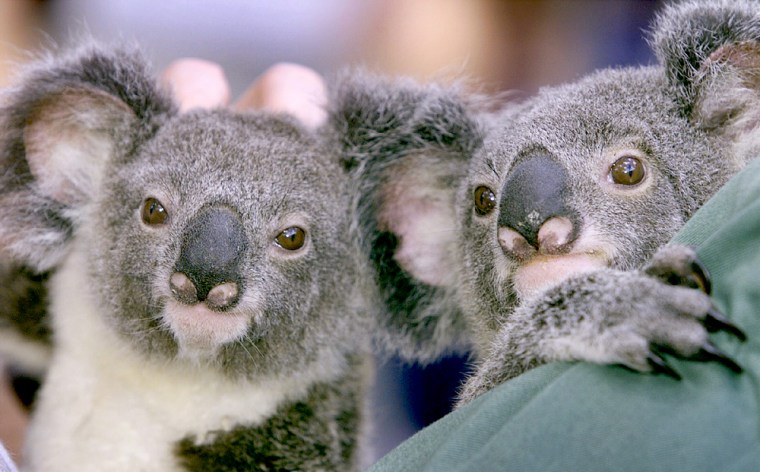Koalas, Australia's iconic symbol, face extinction as rapid urbanization along the eastern seaboard destroys their fragile habitat, the Australian Koala Foundation is warning.
The group has written to the government urging it to declare the koala a vulnerable species after a survey of 1,000 koala habitats found 30 percent no longer had a koala in them and 60 percent had suffered widespread destruction.
“I truly believe that in my lifetime the koala will become extinct unless we do something,” said Deborah Tabarat, executive director of the foundation.
Koalas are protected by law but the eucalyptus trees they call home and which provide their only source of food are not.
There are about 100,000 koalas in Australia, down from an estimated seven to 10 million at the time of white settlement in 1788. In the 1920s, three million koalas were shot for their fur.
Tabarat said the major problem facing koalas was that the majority of Australia’s 20 million people and the majority of the koala population both call Australia’s eastern states home.
Eastern koalas extinct in 15 years?
She said that with 80 percent of Australia’s east coast temperate forests destroyed and continued rapid urbanization, koalas along the eastern seaboard could be extinct in 15 years.
“This animal is in serious trouble,” said Tabarat.
“In 15 years you will not see a koala west of the divide,” she said, referring to the Great Australian Divide, mountains that divide east coast Australia from its rural outback.
Wild koalas only exist in four of Australia’s six states: Queensland, New South Wales, Victoria and South Australia.
The marsupial has no natural predator, but has been in decline for decades due to urban sprawl and from car accidents and dog attacks. More than 4,000 koalas are killed each year by dogs and cars, the foundation says.
The most robust koala population on the Australian mainland exists in southeast Queensland and numbers about 10,000, but it too faces extinction in 15 years, said Tabarat.
Southeast Queensland is experiencing the most rapid population growth of any part of Australia. Over the past eight years, 16,000 koalas in the area died in accidents with cars or dog attacks and another 10,000 injured koalas probably died in the bush, said Tabarat.
Fussy eaters
Diminishing habitat has a greater affect on koalas than most animals. Koalas live in tall eucalyptus trees and low eucalyptus woodlands, but they are fussy eaters.
There are about 600 species of eucalyptus in Australia, but koalas only eat about 120, with koalas in specific areas eating only four to six different types.
An adult koala eats up to one kilogram of leaves each night.
Like a pasture for sheep, a eucalyptus forest or woodland can only support a certain number of koalas, resulting in starving koalas in over-populated habitats or destroyed habitats.
A koala population explosion on Australia’s remote Kangaroo Island off the south coast has prompted calls for 20,000 koalas to be shot to stop them destroying their habitat. The island has some 30,000 koalas struggling to survive.
Koalas are also very social animals, living in stable societies that tend to remain in a small “home range,” which means they require habitats large enough to support a healthy population and to allow for expansion by maturing young koalas.
“People knock down all the scrub and leave a couple of trees and think koalas will be okay,” said Tabarat.
“We might be looking at koalas who are living happily in the bush but you might actually be looking at an extinct population,” she said. “They haven’t got any way of going out of their little home range, mating with someone then coming home pregnant. They just sit there, eke their time out, and then the bush will go silent.”
